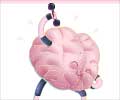Lower back pain due to Modic changes is usually hard to treat and the currently recommended treatment of exercise and staying active often does not offer relief from the pain.

Modic changes (MC) in the spine, where the bone marrow is infiltrated by serum (fluid), fatty deposits, or by sclerosis, can only be seen using Magnetic Resonance Imaging (MRI). It has been suggested that these MC, associated with non-muscular lower back pain, are caused by mechanical stress and therefore might be more responsive to rest than to exercise. This study, based at the Spine Centre of Southern Denmark, was designed to treat patients for a 10 week trial (with follow up after one year). It consisted of either two hours rest a day, and wearing a lumbar support to help reduce load on the spine, or exercise therapy, once a week, supplemented by active living.
The study measured levels of pain, disability, general health, depression and the number of patients achieving a minimum clinically important improvement in their condition. Patients also reported any back problems or sick leave in weekly text messages (SMS). The team led by Rikke K Jensen found no differences for any of the makers between the two groups at either the 10 week or the year catch up. Similarly there was no difference in the course of the disease between the two groups.
It is also well known that a moderate amount of exercise is beneficial to general physical and mental health so perhaps the improvements seen for both groups were due to the patient 'taking control' of their disease rather than the treatment itself. Mrs Jensen countered, "It seems possible however, since lower back pain for these patients did not improve more with rest than exercise, that the MC itself might not be causing pain, that two hours of rest a day was not enough, or that different types of MC may respond better than others to rest. Further studies into these unexpected results will help us identify who will respond best to which treatment."
Source-Eurekalert















